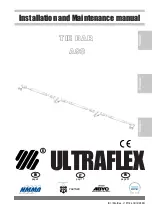
4
TAKARA BIO INC.
CycleavePCR
TM
O157 (VT1/VT2) Detection Kit Ver.2.0
v.0607
Cat.#CY203
URL:http://www.takara-bio.com
Throughout the experimental procedures, the following cautions should be observed:
1. When handling Smart Cycler
®
II System, be sure to follow the written instructions for the
device.
2. If a chimera probe or a primer is decomposed by contamination with nuclease, such
decomposition inhibits accurate detection. Sweat or saliva of an operator can cause
contamination with nuclease. Extreme caution should be exercised during operation.
3. For the specimens determined to be positive, another microbiological test should be
conducted for verification.
4. Please divide physically the operation area into the following three parts for the
procedures from preparation to detection. Do not open tubes containing amplified
products within each area.
Area 1: Preparation and dispensing of reaction mixture
Area 2: Sample preparation
Area 3: Addition of sample into a reaction mixture, and perform reaction and detection.
As this kit performs amplification and detection simultaneously through real-time PCR, there is
no need to use amplified product obtained from the reaction to subsequent process, such as
eletrophoresis, etc.
Please refrain from taking amplified products out of tubes. It can result in contamination.
V. Cautions:
VI. Protocols <Outline of protocol>
1. Sample preparation (see page 5 )
Prepare heat -extracted bacterial sample from proliferated culture solution.
2. Setting of Smart Cycler
®
II System (see page 5-7)
Start Smat Cycler
®
II System.
↓
Set the PCR conditions. [Define Protocols]
Set the graph view of the result. [Define Graphs]
↓
Set the parameters; numbe of reactions and the Protocol/Site to be used, and give a
name to Run. [Create Run]
↓
3. Preparation of reaction solution and start of reaction (see page 7-9)
Prepare the reaction solution.
↓
Transfer the prepared solution into spetial reaction tubes and add a sample.
↓
Load the spetial ubes on Smart Cycler
®
II System and start Run.
↓
4. Viewing of the result (see pages 9-12)
Select the graphs o be used. [Select Graphs]
↓



































